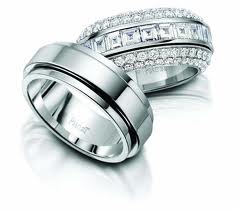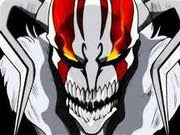Forming metal is a process the level of skill involved is often overlooked. It is process that maneuvers metal into the desired design or shape. It is combination of technique to change an object shape. Under the heading of forming are processes such as chasing, repousse, bending,sinking, using stamps/dies, hammering, and forging. These processes will affect the thickness, pieces shape and often the metal texture.
It is skill which jewelery making should equip for forming metal with different processes and the range of jewellery tools used is as wide.
The simple mallet allows the craftsman to apply direct force without damaging or stretching the metal. The head of the mallet is softer than the metal so as not to mark the surface.
Triblets or Mandrels are used for forming shapes, and are most associated with bangles or rings. Mandrels are available in a variety shapes and size, and in wood and both steel.
Jobbing hammers are ideal for general use and metal forming. The planishing hammer is used for shaping, polishing and smoothing metal. Riveting hammers are designed with a small head for detailed rivet work. The different stages of forming are used in bossing , raising, and chasing hammers.
Steel blocks provide the ideal flat surface for working, flattening sheet or wire or to support work as it is raised or forged, riveted or textured.
Doming blocks & punches are the ideal way of shaping metal and making domed, shaped pieces or hollow beads. Pieces of circular metal/discs are place over the hollows of a doming block, and then using punches and a hammer the metal is formed into a shape.
Rather like doming blocks, Swage blocks help form metal into tubes, curves and channels. Different blocks will allow different shapes and sizes to be formed.
These bags provided support whilst you work and form your piece. They help keep your work firm and in place whilst working.
Files are essential for removing excess material, and fine tuning and shaping your piece. The different sizes available allow the jeweller to work large areas or at a more intricate level. To start with buy a selection of shapes containing round, square, triangular, half round and warding. Plus consider the cut ranging from 0 the coarsest, to 6 the finest.
Pliers have a multitude of uses but they are the most basic tool for holding/gripping, forming and shaping wire. Having a basic selection of needle nose, round nose, flat nose, half round and a pair of parallel action pliers, will give the jeweller the flexibility to complete most jobs.
Draw plates are most commonly used to reduce the size or change shape of wire. Each plate has a series of holes through which the wire is passed through, this then changes the size of the wire. The holes in the plate are of decreasing size allowing you to continue draw down the wire to the required size.
Often used by silversmiths, the metal is placed over the stakes (usually clamped independently into a vice) and hammered to achieve the shape required. Various shapes can be achieved by using different stakes.
These larger machines often seen in jewellers' workshops are ideal to reduce the thickness of sheet, or help decorate sheet. If used with Square and D shape sections rolling mills can be used to form or shape wire.
Jewelers Tools
Labels: jewelers tools
Wedding Day Jewelers


Purchasing wedding jewelry is important but before you purchase the particular jewels, I think you must plan out a budget. Some people prefer to matching with their wedding theme whereas others prefer matching them with their dress. If the jewels are selected appropriately then they can really help in complimenting your wedding gown.
Here some useful Tips:
1. If you cannot afford to spend a large amount on ornaments, you can consider renting them for a day or purchase delicate artificial pieces that would resemble real jewels.
2. If you are organizing a traditional wedding with elaborate decorations and traditional wedding gown then you can compliment it with heavy jewelry pieces that would surely make you glow. Glittering diamond ring, together with a gold chain with a small diamond pendant would also look good on a traditional dress.
3. Some brides also consider purchasing tiaras for their wedding ceremony. The tiara would really look very good with a traditional and full length gown with lots of frills and ribbons.
4. If you are wearing a strapless or a backless wedding dress then you must pay great attention to your jewelry. You can purchase a heavy diamond or platinum necklace with heavy earrings.
5. The neckline of your gown plays a very important role when it comes to selecting the best neckpiece for your wedding day. For gowns which are strapless or have a low neckline, you must select elaborate neck pieces.
6. For formal weddings you must select sophisticated jewels whereas for an informal event like a beach or tropical wedding you can adorn yourself with simple and informal pieces.
7. You can also select different color jewelry items for a more a elaborate show.
I am sure this article would provide you all the important information that you require about wedding day jewelry. The tips mentioned above would certainly help you to select the items that are most ideal for you.
Purchasing wedding day jewelers for your loved one is an exciting and momentous time, so carefully shop it.
8. Remember one thing that your wedding ornaments should also be a reflection of your personal style and preferences. Never try to select something that would not look on you.Labels: wedding day jewelers
